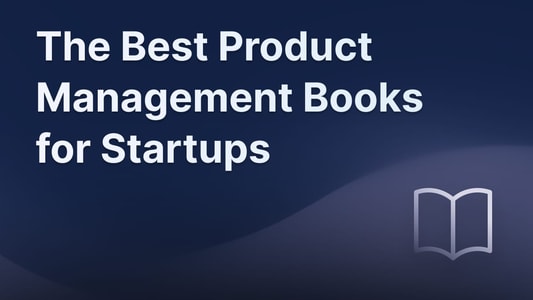Blog Product ManagementThe Complete Guide to Digital Product Management (+ how we do it)
The Complete Guide to Digital Product Management (+ how we do it)
Want to learn more about digital product management? In this post, we'll look at the best ways to increase customer satisfaction and build a long-term product strategy using proven methods. Let's get into it!

Struggling to grow your product or retain users? Your digital product management process might be to blame.
Digital product management (DPM) involves coordinating all the different elements of your business. The goal is to create a repeatable framework for identifying opportunities, capitalizing on them, and measuring the results.
I know, easier said than done. 😅
That’s why, in this guide, we’ll explore a few effective and actionable strategies you can implement to give your product management process an instant boost.
Helpful summary
- What is it: Digital product management (DPM) is the strategic planning and development of digital products considering both users needs and business goals.
- Why it matters: Effective digital product management ensures startups can adapt to market changes, prioritize customer feedback, and innovate continuously.
- How to do it: Develop a clear product strategy, prioritize tasks by business impact, implement communication channels, adopt agile methods, use automated testing, and close the feedback loop.
What is digital product management?
Digital product management (DPM) is the strategic planning and development of digital products, like apps and websites, to meet user needs and achieve business goals.
Or in simpler terms, “the process of building digital products people actually want to buy”. There’s a lot to unpack there—and that reflects the complexity of the role itself.
Let’s break it down into a few key elements:
- Understanding user needs: To build a product people want to buy, you need to understand their pain points and what they're looking for in a solution. That means market research, user feedback, and a deep understanding of competitors.
- Product strategy: Once you know what users want, you need to figure out what to build. This involves setting goals, prioritizing features based on user needs and budget, and creating a roadmap for the product.
- Development & testing: There’s also a huge technical component to DPM—you know, actually building the product. This involves managing development teams, setting timelines and milestones, and ensuring product quality through testing.
- Launch: Go-to-market (GTM) strategy is also critical to DPM. This includes planning the launch, setting pricing and messaging, and creating marketing plans to drive adoption and usage.
- Analytics & optimization: After launch, DPM involves tracking performance, monitoring feedback, and analyzing user data. The goal is to identify areas for improvement so that users keep wanting to use the product.
It’s important to have a single point of contact responsible for coordinating all these moving pieces—that’s usually the role of the Digital Product Manager (also DPM) or PM. This is a management role that requires a tricky balance of technical understanding, project management skills, and business experience.
That said, plenty of founders start off filling this role themselves.
Why is digital product management important?
1. Helps in long-term strategy
For any given product, there are hundreds of different directions you could take it. Not all of those will be good for the business—and some can even lead to failure.
Digital product management is about finding opportunities for a product to succeed and creating a roadmap to get it there. This involves understanding the market, competition, and target audience, as well as analyzing data and trends.
Without a dedicated process and person in place to do this, you’re leaving yourself vulnerable to making misguided decisions and falling behind your competitors.
2. Boosts agility and responsiveness
A great DPM process makes your product much more agile and responsive.
When you get user feedback or spot a shift in the market, you know how to analyze the information and make informed decisions about pivoting or enhancing your product.
3. Increases customer satisfaction
A central aspect of digital product management involves prioritizing customer feedback and engaging in user research.
This practice ensures the development of products with a keen awareness of customer needs and pain points, an important element in creating successful products that align with market demand.
📕 Check out our favorite product management books →
How we do digital product management
1. Set a clear product strategy
Effective digital product management stems from a solid product strategy.
What is a product strategy? It’s a high-level document (or set of documents) that outlines the product vision and goals, target market, competitive landscape, and financial goals of your business and product.
It’s basically a single source of truth that helps guide all product decision-making and makes sure that everyone on the team is working towards the same goals. And speaking of goals, your product strategy also outlines the metrics and KPIs that you'll use to measure success—things like:
- MRR and ARR
- Retention and churn rates
- Conversion rates
- Customer satisfaction ratings
These are important metrics for benchmarking your DPM efforts and determining whether your product is meeting its objectives.
2. Establish channels for user feedback
This is one of the most impactful ways to improve your digital product management. Your product lives and dies by its users, so their feedback is arguably the best tool you have for improving your product—the more you collect, the better.
The way you collect user feedback at scale is by:
- Opening up multiple feedback channels.
- Making the process of offering feedback simple and rewarding across all of those channels.
When it comes to channels, you have a ton of effective options.

Take Featurebase, for example—our user feedback portal and widgets allow you to collect feedback through your website, web app, mobile app, and dedicated portal. Your users are automatically logged into the portal, so there’s no friction when they want to share their thoughts.
Beyond that, there are tons of other channels that may (or may not) be important to your business:
- Helpdesk
- Live chat
- Social media
The key is keeping all of these feedback channels organized. We offer many integrations like Intercom and Zapier that help you connect all your channels and centralize feedback in one place for easier analysis.
"We always have a database of new features to work on. Saves a lot of time since all the feature requests would have otherwise been emails."
- Leo Mehlig, Founder of Structuredhelps you decide which feature ideas to focus on first. It’s a key piece of the digital product management puzzle because it allows you to stop relying on best guesses,
3. Pin down a prioritization framework that works
A product prioritization framework helps you decide which feature ideas to focus on first. It’s a key piece of the digital product management puzzle because it allows you to stop relying on best guesses, which aren’t reliable or repeatable.
We have a whole post on digital product prioritization frameworks you can check out for a detailed guide, but I’ll quickly introduce a few here:
- Value vs. Effort: We’re big believers in this framework. It essentially involves estimating the value and effort involved in each task, and then prioritizing based on tasks with high-value and low effort. You can actually generate value-effort matrices with Featurebase based on revenue data we pull from user profiles and effort scores that you add yourself.

- RICE: This framework stands for Reach, Impact, Confidence, Effort. The idea is to score each task on these four factors and then prioritize based on the highest overall score. It’s a great way to objectively evaluate tasks and avoid bias.
- Kano Model: This framework involves categorizing tasks into three categories—basic needs, performance needs, and “delighters”—and then prioritizing based on their importance in satisfying customer needs. This one’s especially useful for understanding which features will wow users.
Whatever framework you choose, it needs to be standardized, data-driven, and aligned with your product strategy. For example, if your ultimate goal is reaching $20,000 in MRR, your framework should include a revenue component.
4. Streamline communication
Communication gaps are the silent killer of effective digital product management.
They’re a key digital product management challenge you’ll need to overcome to maintain efficiency and effectiveness. To address this, you need to find a communication strategy that efficiently distributes information without becoming overwhelming.
So, how do you do that? Here are some simple steps you can take:
- Seek input: Ask users what’s working, what isn’t, and what solutions they feel could help them overcome the issues they have with your communication practices. Figure out what issues are common and collaborate on solutions.
- Establish a single source of truth: Build a repository for all your product’s documentation, plans, and decisions that can be accessed by everyone. This will cut down on the amount of low-level communication needed to make progress. Notion and Confluence are popular tools for this.
- Find a tool that works: Most of your communication will probably happen over one tool—make sure it’s the right one. Slack is great because it integrates with so many other tools out there (including Featurebase!), but there are definitely other options like Discord, which we use ourselves.
- Consider async check-ins: Meetings can waste tons of development time—and they aren’t usually needed for alignment. Look into async meeting tools that let you conduct things like daily standups via Slack.
- Clarify roles & points of contact: Everyone on your team should know who is responsible for what and who they should talk to if they have any questions or concerns. @here questions shouldn’t be the norm.
These simple steps will solve most (if not all) of your communication issues.
5. Adopt agile methods
Agile has proven itself to be a powerful digital product management asset. It’s in the name—Agile lets you adapt more quickly when issues arise or customer needs change, and it reduces the chances of your product becoming outdated or obsolete.
According to the 17th State of Agile Report, Agile leaders to a:
- 64% increase in deployment speed
- 47% increase in productivity
- 42% increase in product quality
This doesn’t mean you need to do a full 180 and implement Agile practices across your entire company. But, it does mean that it’s worth experimenting with Agile methods and processes like Scrum and sprints.
Your feedback channels will play a big role in this.

Product management tools like Featurebase give you an organized, prioritized backlog to pull from that is always ready for sprint planning. Features like AI duplicate post suggestions work in the background to help keep your backlog refined while you work.
6. Use automated testing
It can be challenging to maintain speed and product quality as your product grows. That makes it hard for DPMs to maintain the high-speed, high-velocity releases that users expect.
Automated testing can be a huge benefit here.
There are tons of tools available for automated testing—from Selenium and Appium for functional testing to LoadRunner for performance testing. These tools can help you catch bugs early, but they aren’t foolproof…
That’s why you also need a great bug report workflow. With Featurebase, users have tons of ways to report bugs, including:
- Feedback portal

- Side-panel widget

- Popup widget

- Integrations (Intercom, Slack, Zendesk, etc.)
We offer a built-in screenshot and annotation tool to make sure feedback is clear and actionable. Plus, users automatically get notified when you make progress on their requests.
7. Close the feedback loop
Speaking of automated notifications, closing the feedback loop is actually one of the most important digital product management tasks of them all. If users don’t know that you’re onboarding their feedback and suggestions, you may as well not be.
The feedback loop begins when a user gives you a suggestion (either a full-blown request or an upvote on a thread). It ends when that specific user is informed that you’ve:
- Heard their feedback.
- Implemented their feedback.
Making sure the loop is closed for individual users key—but it becomes challenging when you’re dealing with a large user base. Luckily, there are countless tools to help you.
For example, here’s how the process works with Featurebase:
- Capture feedback: Featurebase allows you to embed feedback portals and embed widgets within your product. This fosters a sense of control among users, motivating them to actively contribute their feedback.

- Prioritize & manage ideas: Users can submit feedback and vote on others’ ideas, helping you better prioritize features and bugs. You can also sync customers' feedback with their revenue contribution. This can help you focus on those whopay you and even prioritize those who pay the most.

- Automate announcements: Users who suggest features, comment on a thread, upvote a thread, or subscribe for product updates will all be notified when the status of a feature request changes.

- Intuitive changelog updates: We also offer an intuitive changelog that allows you to create more in-depth release notes on new features. Our changelog widget gets these updates in front of users without them even having to leave your product.

8. Create a positive work culture
The final digital product management tip I’m going to cover is broad—but that doesn’t mean it isn’t important. The best way to optimize your DPM process is by filling it with talented people who get what you’re trying to do, have the skills to do it, and are passionate about your product.
But there’s a problem—there are up to 72,000 other SaaS companies competing for the same talent.
Money is obviously the main motivating factor for employees, but if 3 companies are offering them a similar salary, things like culture, work-life balance, and employee perks become differentiators. Create a positive work culture, and you’ll start to attract better hires.
So, how do you create a positive work culture? Here are a few tips:
- Offer flexibility: Flexibility is a spectrum. On the one hand, you have full remote work, unlimited PTO, and flexible hours. On the other hand, you have strict 9–5 schedules, no work from home policies, and limited vacation time. Find a balance that works for you while leaning toward the more flexible end of the spectrum.
- Incentivize good work: Talented people like to be recognized for their work. Set up an incentive program for reaching specific goals or going above and beyond. This can be in the form of bonuses, extra vacation days, or anything else you think will resonate.
- Lead by example: Lastly, lead by example. As a leader or manager, your actions and attitude set the tone for the entire workplace. Show integrity, respect, and positivity in your interactions with employees and others in the company.
Conclusion
Digital product management is tough—but when you find a process that works, you can effortlessly take your product to the next level.
Tools like Featurebase streamline this process, allowing you to prioritize ideas based on user votes, frameworks, and monetary value. It comes with feedback widgets, roadmaps, and changelogs to to close the feedback loop and stay transparent.
Featurebase comes with a Free Plan that allows collecting and managing unlimited feedback, so there's no downside to trying it.
Start collecting feedback & managing your product with Featurebase today →
The simple feedback tool with feature voting for your customer feedback. Built-in the 🇪🇺.
© 2024 Featurebase. All rights reserved.


